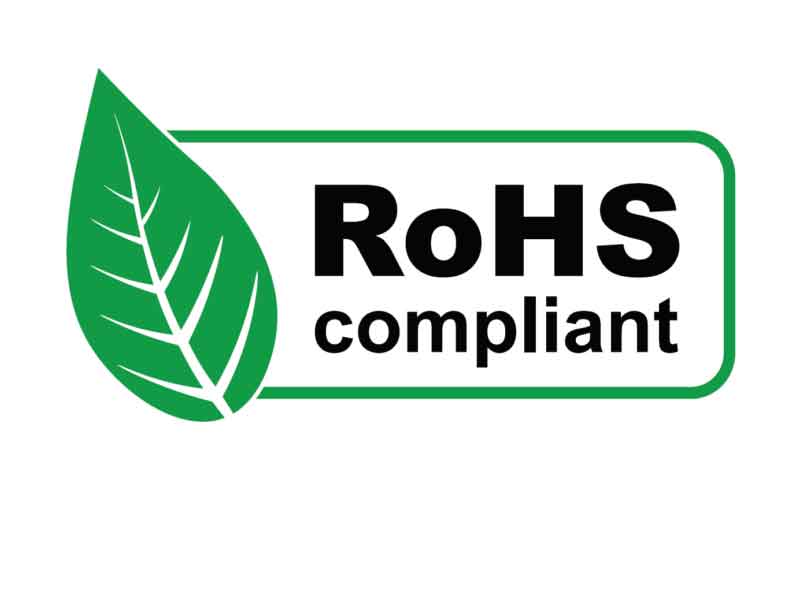The public consultation on improving the EU’s Directive on the Restriction of the use of certain Hazardous Substances in Electrical and Electronic Equipment (“RoHS”) has opened.
 Emma Bichet and Corinne RobinsonIt will be ongoing until June 2, 2022. Here’s our take on what’s on the horizon for the RoHS regime and how it can impact business, particularly those active in the electronics products space:
Emma Bichet and Corinne RobinsonIt will be ongoing until June 2, 2022. Here’s our take on what’s on the horizon for the RoHS regime and how it can impact business, particularly those active in the electronics products space:
RoHS is the EU Directive that sets limits on the use of certain hazardous substances (including lead, mercury, cadmium, hexavalent chromium, PBBs, and PBDEs) in electrical and electronic equipment. Since its first adoption, the scope of RoHS has gotten progressively wider. In July 2019, it was extended so that it now covers all EEE that is not specifically exempted. More recently, in December 2021, the Commission adopted 12 Delegated Acts that to end existing exemptions for certain product categories.
Why is RoHS being revised? RoHS is being revised as part of a much broader revision of EU chemicals law and a general drive to make products more sustainable. In parallel, other key pieces of EU chemicals legislation, including REACH and the CLP, are also being revised.
What changes are on the horizon? The Commission is currently exploring the following policy options:
- Introducing non-legislative (‘soft’) measures, such as an update of the RoHS FAQ document to explain the interaction of RoHS with other legislation (primarily REACH and Ecodesign).
- Introducing and revising legislative (‘hard’) measures and soft measures to clarify/improve: (i) the exemption criteria and process; (ii) the substance restrictions trigger, criteria, and process; (iii) coherence with other legislation; and (iv) implementation and enforcement.
- Transforming the RoHS Directive into a Regulation that would apply in the same way in all countries to simplify its application.
- Repealing the RoHS Directive and incorporating its provisions into the REACH Regulation and/or sustainable products legislation (such as the new EU ecodesign rules).
In the European Commission’s 2022 work program (here), the goal of the RoHS revision is stated as to: “Strengthen and simplify legislation to better protect citizens and the environment against hazardous chemicals, inter alia by taking into account the move towards a process of ‘one substance – one assessment’ and providing for greater transparency when prioritizing action to deal with chemicals, as well as by encouraging innovation for the development of safe and sustainable alternatives, as highlighted in the European Green Deal. The revision will aim to reduce the administrative burden with regard to the exemptions process.” It is hoped, therefore, that amongst other things, the RoHS revision will help make requirements for consumer electronics clearer and provide greater alignment with the rest of the EU chemicals regime.
Next steps:
- The public consultation is an opportunity to provide your views on the best option for improving the RoHS Directive.
- Further information and a link to the consultation questionnaire can be found here. Following the consultation, the Commission has suggested that it will publish draft legislation in Q4 of 2022.
- We estimate that, if there are no delays, the legislation would likely be passed in 2023 / 2024, and the enforcement date would be 2025/2026.
How is the RoHS revision likely to impact business? We will be able to assess the impact of potential changes once it becomes clear how the Commission plans to revise the RoHS regime. Changes could potentially be wide-reaching, particularly if they would lead to further restrictions on the chemicals that can be included in electronic products marketed in the EU. Changes to RoHS are also likely to be influential globally on the legislation in other countries.
What is happening in the UK? For now, the UK RoHS Regulations are still aligned with the EU position. It is unknown if the UK will choose to follow the same approach as the EU going forward and if the EU changes will be replicated in the UK. Hazardous substances in products are also a focus for the UK Government. In a current consultation on waste prevention, it is being considered whether reducing the use of hazardous substances in materials and products could encourage the use of secondary materials (as they are more likely to comply with the potentially more stringent future restrictions on the use of hazardous substances). The consultation document “Waste Prevention Programme for England” can be found here and the policy paper “Our waste, our resources: a strategy for England” here.
If you have any questions or would like to participate in the consultation, a member of the Cooley team would be delighted to assist.
Emma Bichet is Special Counsel Corinne Robinson is, an Associate at Cooley LLP and Cooley (UK) LLP in London. Visit https://www.cooley.com



































